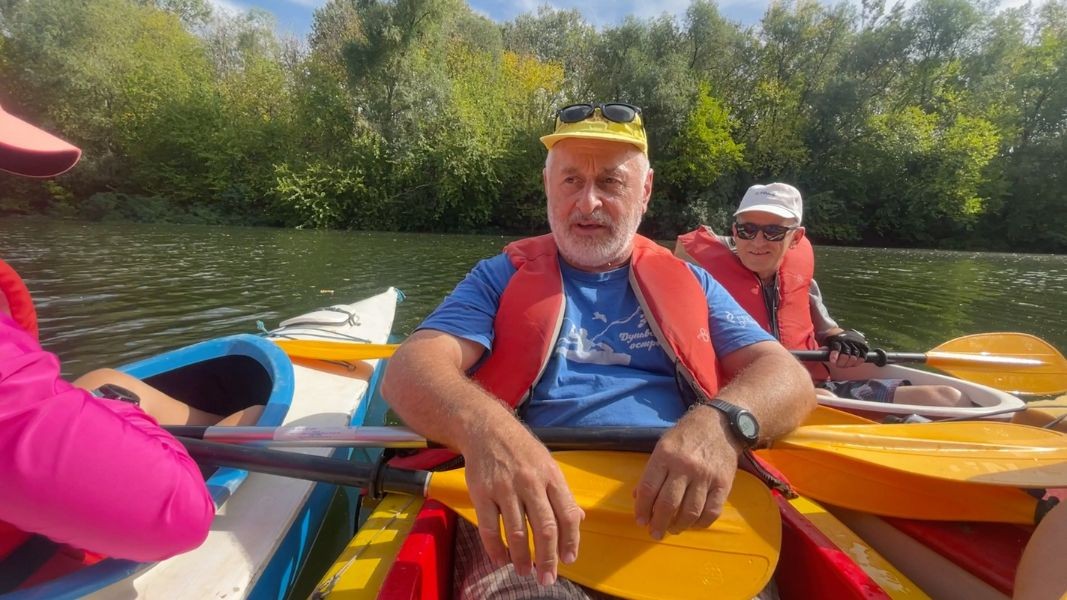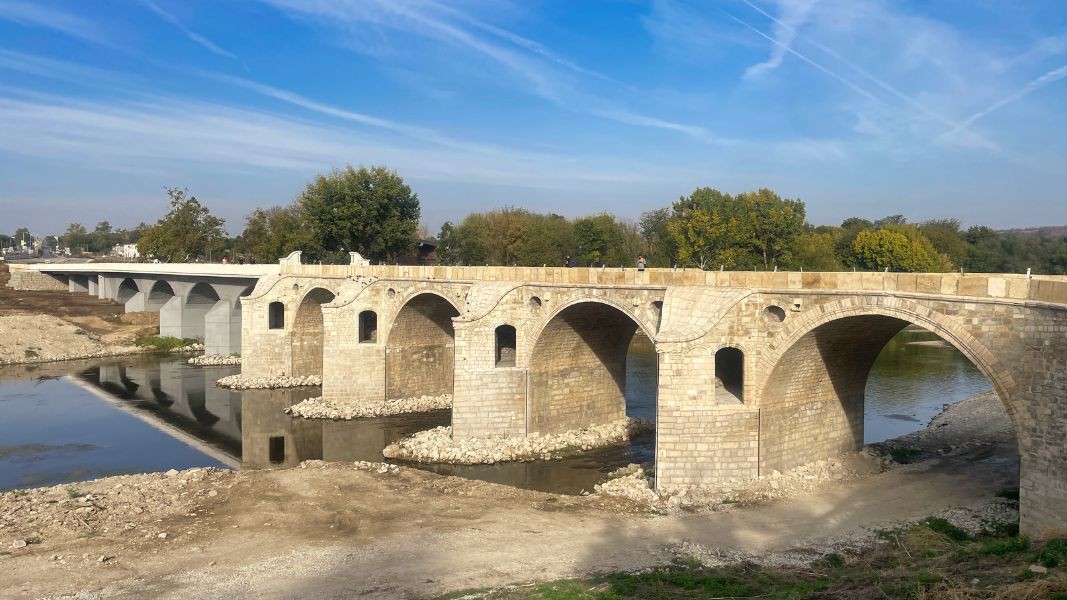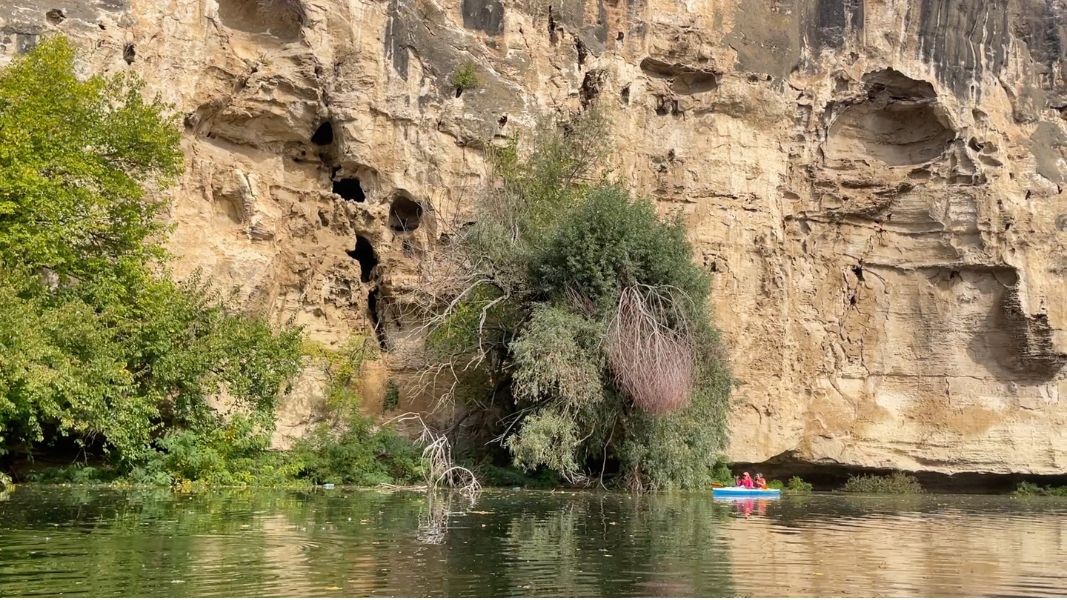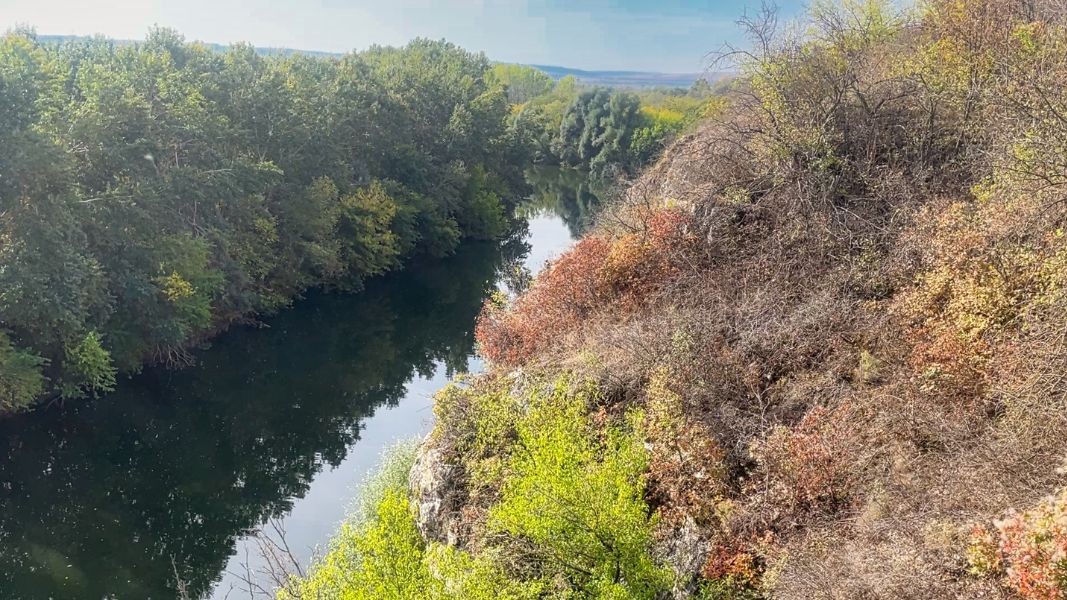The Yantra River rises in the Balkan Mountains at 1,220 metres above sea level and descends northwards, meandering through picturesque valleys and gorges in central northern Bulgaria, crossing the towns of Gabrovo and Veliko Tarnovo. Shortly before it flows into the Danube, in the area of the villages of Belyanovo and Novgrad, like a talented sculptor, the river moulds before our stunned eyes meanders and a deep canyon lined with caves and inaccessible crevices.

"We give short instructions and people get in the boats and go. The river is good, cozy. It envelops people with its atmosphere and they feel part of the landscape, of all this abundance... There are trees on both sides and you're like in a green tunnel. You find yourself into an isolated world with many birds and animals and you sink inside nature. There may be settlements around, roads, but they remain out of sight, out of our hearing. And we move only along this green street called Yantra."

"Interestingly, in this part of the Yantra River there are high cliffs on one bank, reaching up to 40-50 m. And this rock wall is "embedded" directly into the water below", says Sasho Popov. "These rocks are limestone, they have been eroded by the water. They have an interesting structure with caves, with niches... And in some of them hermit monks in the Middle Ages carved rock cells. There were rock churches, rock monasteries. They are difficult to access, you need mountaineering equipment to penetrate them. But near the village of Belyanovo you can see a rock church from the 12th century, which has been improved for tourism purposes."

"And it becomes a combination - we have sport and tourism activity related to rowing. We have beautiful landscapes like in the paintings of the impressionists, of Claude Monet. We have history - the monastic cloisters in the cliffs. We have ornithology, because this green curtain on both sides of the river attracts many waterfowl - grey heron, cormorants, mallards. I've also seen storks, osprey, etc. There are legends of huge fish living in the underwater cavities here. Right where the rock reaches the water there are underwater niches where huge catfish used to hide and fishermen, when they catch a catfish, tell stories for years," says Sasho Popov in conclusion.

Explore more parts of Bulgaria with the same author:
English publication: Rositsa Petkova
Bulgaria’s southern Black Sea coast continues to welcome hundreds of thousands of holidaymakers even after the peak of the tourist season. In early September, the resort towns still pulse with the rhythm of summer, and the Municipality of Tsarevo is..
Unique not only on the Balkans but in all of Europe – this is the underground Mining Museum in Pernik , located just about 30 kilometers from the Bulgarian capital city Sofia. It is built within an actual mine, once known as "The Old Mines." Opened in..
Huddled in the folds of the mountain, its magnificent stone houses and fences are the reason why people have come to call it the “Stone Nest” of the Balkan Range. Life in Iglika is quiet and restful, far from the noise and bustle of the 21 st..
The Rhodope narrow-gauge railway is one of the world’s most scenic autumn train journeys, according to an international survey by the British JR Pass..

+359 2 9336 661
